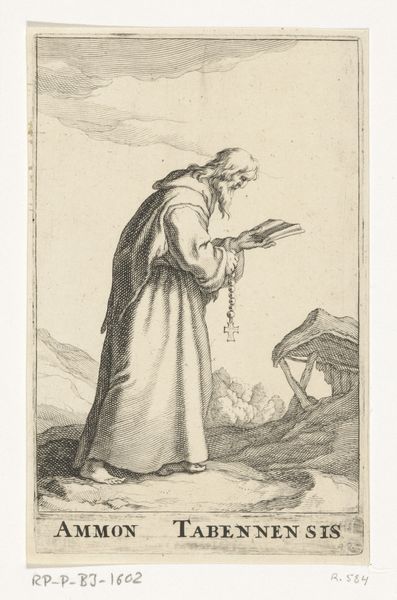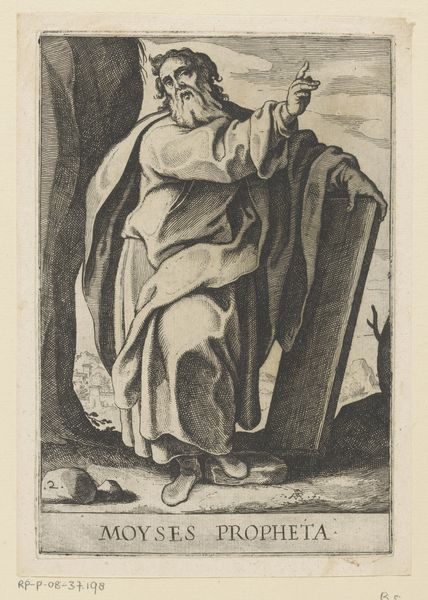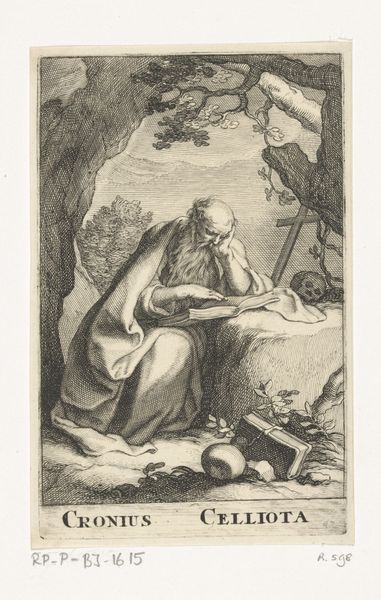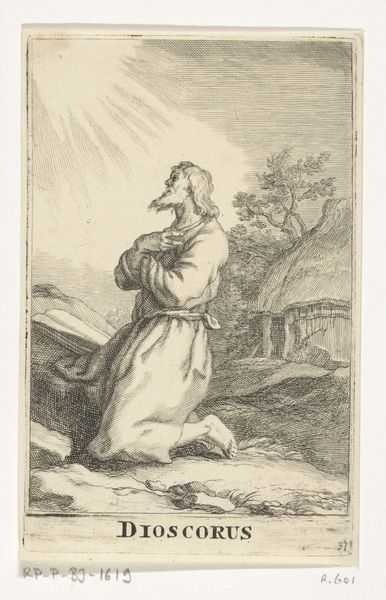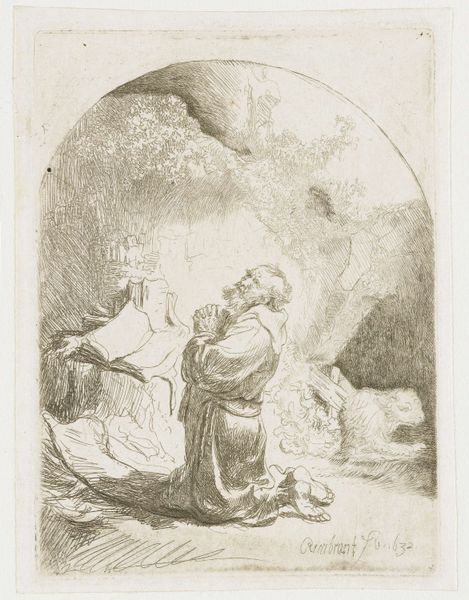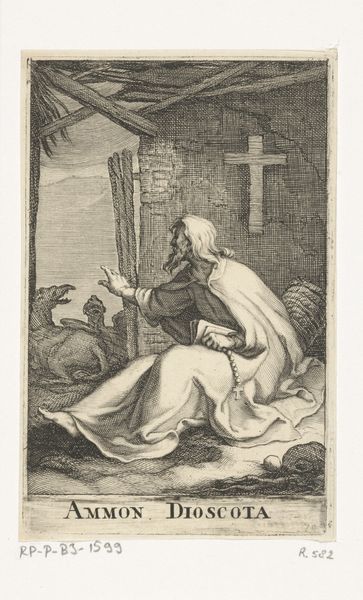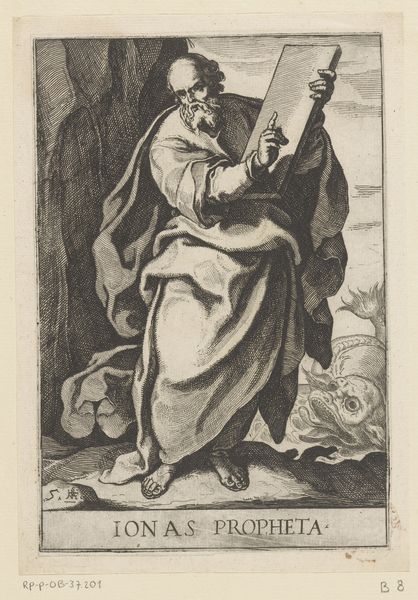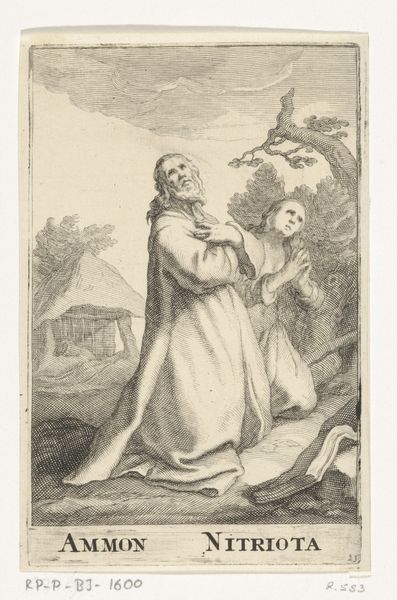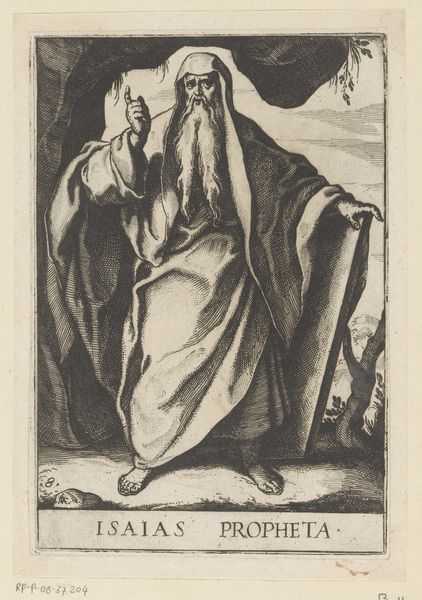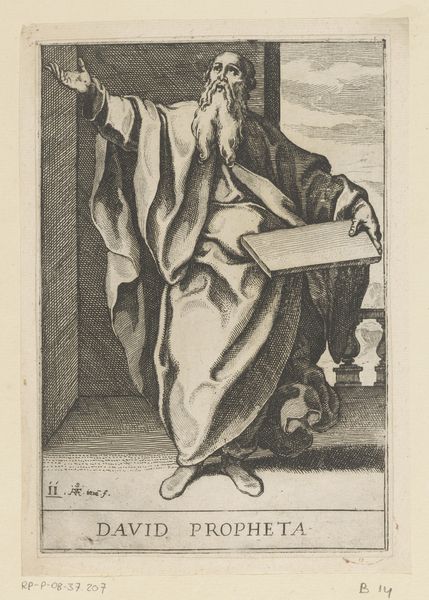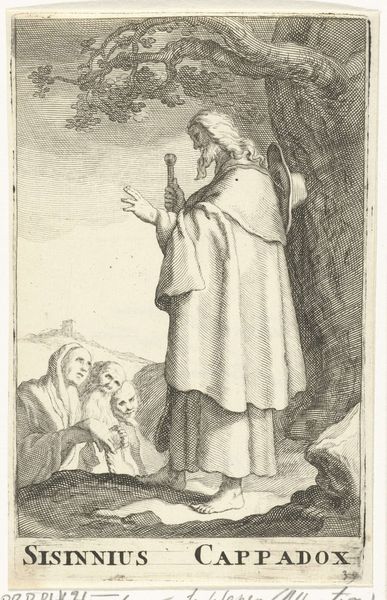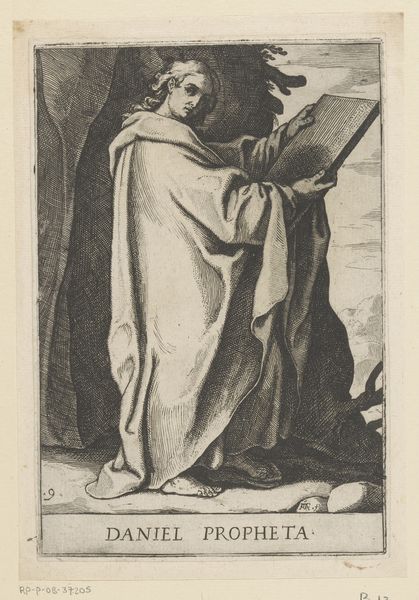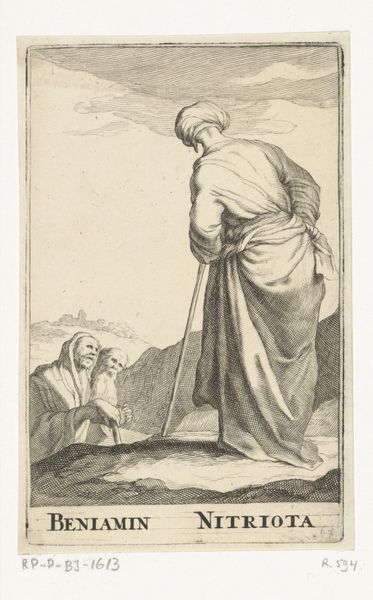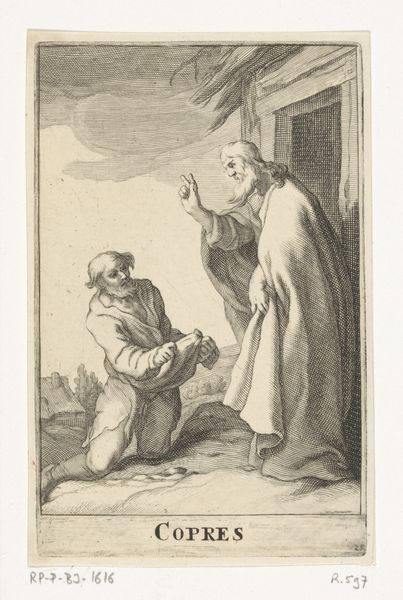
print, engraving
# print
#
figuration
#
history-painting
#
engraving
Dimensions: height 135 mm, width 85 mm
Copyright: Rijks Museum: Open Domain
This is Frederick Bloemaert’s “Heilige Adolius Tarcensis”, an engraving made with metal, likely in the mid-17th century. Engraving is an exacting process. It begins with a polished metal plate, into which an image is incised using a tool called a burin. This requires immense skill and control; the depth and spacing of lines determine the print's tonal range. The plate is then inked, and the surface wiped clean, leaving ink only in the engraved lines. Finally, damp paper is pressed against the plate, transferring the image. Look closely, and you'll notice the stark contrast and fine detail, characteristic of this printmaking method. The cross-hatching builds form and shadow, giving a tangible quality to the figure of Adolius. Engraving, in its capacity to disseminate images widely, played a significant role in shaping cultural narratives. Each print involves skilled labor and time, reflecting economic and social structures of the era, including workshop practices. This was a means of image production that blurred the line between artistry and industry.
Comments
No comments
Be the first to comment and join the conversation on the ultimate creative platform.
